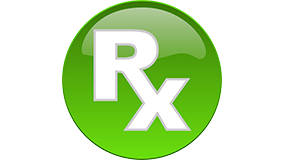-
Prefacexiii
-
Acknowledgementsxiv
-
-
Introduction1
-
Organizational Change Management and the SDLC10
-
IT Governance and the SDLC19
-
The Project Management Method and the SDLC22
-
Tying It All Together26
-
What to Expect28
-
-
System Development Models29
-
Waterfall Model31
-
The Spiral Model39
-
The V-Model43
-
German V-Modell 97 and V-Modell XT43
-
US Vee Model45
-
The Dual Vee-Model49
-
-
Incremental Commitment Model51
-
Adaptive Software Development55
-
The Agile Manifesto56
-
-
Rapid Application Development58
-
Scrum60
-
The Crystal Family65
-
Extreme Programming69
-
Dynamic Systems Development Model72
-
Lean Development76
-
Understanding It All80
-
-
Requirements Maturity, IT Governance & Planning85
-
IT Governance and the Requirements Process91
-
Work Intake94
-
-
Requirements Maturity99
-
Requirements Planning104
-
RACI Charts106
-
Communications Plan108
-
-
-
Requirements Elicitation111
-
Brainstorming112
-
Focus Group117
-
Interview120
-
Observation123
-
Prototyping126
-
Modeling Standards127
-
Prototype Types130
-
-
Requirements Workshop134
-
Managing Scope Creep144
-
-
Survey146
-
-
Requirements Documentation & Quality150
-
Best Practice Business Requirements Definition154
-
Non-Functional Requirements162
-
Process Definitions164
-
Good Requirements Quality Checklist169
-
-
Requirements Analysis, Inspection & Tracing175
-
Document Analysis180
-
Interface Analysis181
-
Requirements Elaboration183
-
Requirements Prioritization188
-
System Requirements Specification192
-
Test Strategy196
-
Requirements Inspection197
-
Requirements Baselining199
-
Tracing Requirements200
-
IT Governance Next Steps203
-
Requirements Artifacts203
-
SDLC Requirements Phase Activity Diagram205
-
-
Design & Development206
-
Business Process Analysis & Design208
-
Object-oriented Analysis & Design209
-
Service-Oriented Analysis & Design211
-
Structured Analysis & Design214
-
Data Modeling218
-
Design Quality Review Stage Gate222
-
Development Cycles223
-
Iteration Kick-off Meeting224
-
Daily Stand-up Meeting227
-
-
Test-Driven or Test-First Development228
-
The Development Cycle232
-
Development and Coding Standards237
-
-
Pre-Implementation Activities and Artifacts239
-
Implementation Plan239
-
Detailed Test Plan243
-
Functional Testing246
-
Non-Functional Testing247
-
-
Training Artifacts249
-
Assessing End User Needs250
-
Setting Training Goals250
-
Determine the Training Delivery Methods250
-
Develop the Training Materials252
-
Scale the Program254
-
Tailor the Training Program254
-
-
Operational Turnover Artifacts254
-
Service Level Agreements258
-
Change Request258
-
Design & Development Phase Activity Diagram264
-
-
Quality Assurance & Implementation265
-
What is Quality?266
-
How Does the SDLC Help Manage Quality?266
-
Who Owns Quality?267
-
What are the Differences between Quality Control and Quality Assurance?267
-
What are Three Common Misconceptions about Quality?268
-
Quality Models and Standards269
-
The Pareto Principle and Quality Assurance273
-
Defect Classification274
-
The SDLC Test Battery280
-
Acceptance Testing283
-
Quantified User Acceptance Testing284
-
Contract and Regulation Acceptance Testing285
-
Alpha and Beta Testing286
-
-
Additional Testing Best Practices288
-
Automated Testing upon Code Check-in288
-
Benchmarking289
-
Defect Discovery Incentives289
-
Memory Resource Failure Simulation289
-
Reduce the Number of Regression Test Cases289
-
-
Implementation & Maintenance290
-
Release Management290
-
Configuration Management292
-
Software Configuration Management294
-
System Hardware Configuration Management295
-
Configuration Management and Maintenance295
-
-
Subcontractor Management295
-
Outsourcing296
-
Multi-Cultural Training299
-
-
Implementation Readiness Review304
-
Submit the Change Request304
-
Train the Users304
-
Package the Release305
-
Perform the Deployment306
-
Operational Acceptance Testing306
-
Implementation Phase Activity Diagram307
-
-
Continuous Improvement308
-
Business Transformation Governance311
-
W. Edwards Deming on BT312
-
-
Capability Maturity Model Integration314
-
Kaizen317
-
Theory of Constraints319
-
The Thinking Processes320
-
Microsoft TOC Case Study322
-
-
Kanban323
-
Corbis Kanban Case Study326
-
Scrum-ban326
-
-
Statistical Analysis Variants326
-
Six Sigma327
-
Lean Six Sigma329
-
TOC Lean Six Sigma330
-
-
All the Rest331
-
Overall Equipment Effectiveness331
-
Root Cause Analysis and TRIZ332
-
-
IT Performance Measurement333
-
Performance Measurement Fundamentals334
-
-
SDLC Metrics335
-
Lifecycle Framework Metrics336
-
Defects336
-
Effort338
-
Requirements339
-
Schedule340
-
Value Chain Metrics341
-
Steady State342
-
Quality Assurance Metrics343
-
-
Conclusion344
-
-
Handy Desk Reference345
UltimateSDLC.com runs on the Genesis Framework
The Genesis Framework empowers you to quickly and easily build incredible websites with WordPress. Genesis provides the secure and search-engine-optimized foundation that takes WordPress to places you never thought it could go.
Check out the incredible features and the selection of designs. It's that simple—start using Genesis now!
Click here to download The Genesis Guide for Absolute Beginners (PDF - 1.4 MB)

Leave a Reply